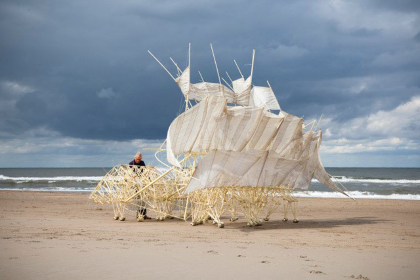Main content starts here.
Foreign Languages > Chiba International Information Square - To foreign residents - > Chiba Nanohana News > Chiba Nanohana News (Past Issues) > Chiba Nanohana News (November 2023)
Chiba Nanohana News (November 2023)
Index
I. Festivals and Events II.Exhibitions, Concerts, etc
I. Festivals and Events
1) Fall Colors in Chiba
There are many fall color spots in nature-rich Chiba! As the days shorten, enjoy the flaming fall foliage in Chiba Prefecture!
*The peak period for fall colors depends on the weather. Please check with each facility before heading out.
Izumi Nature Park Momiji Festival (Chiba City)

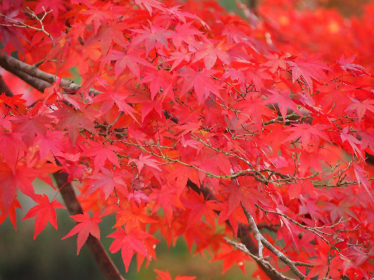
Izumi Nature Park is a scenic, 43-hectare park located approximately 11 kilometers east-southeast of central Chiba City. The rolling hills and flora and fauna of the Hokuso Plateau create a wide range of scenery within the park that varies from season to season. Izumi Nature Park is one of Japan’s top 100 cherry blossom viewing spots but it is also well-known for its fall colors.
The Momiji (Autumn Leaves) Festival will be held in Izumi Nature Park with food trucks and a variety of events scheduled. Come have fun surrounded by the fall colors!
<Event information>
Photo contest
Calling for a photo that represents Izumi Nature Park with the theme of “Finding a piece of autumn in Izumi Nature Park 2023”. You may participate via email or Instagram. Receive the Izumi award or the Sakuhin award (1 photo per award) to obtain a pair of tickets to Chiba Forest Adventure!
- When: 3 November (Friday) to 3 December (Sunday)
Nordic Walk
Enjoy the fall colors as you do a total-body workout using walking poles around the park. This walk is also suitable for those who lack exercise.
- When: 11 November (Saturday) and 18 November (Saturday), 10:00-11:30
- Limited to the first 20 sign ups
- Fee: ¥1,300 per walk per person (¥2,500 per person for both walks)
- Pole rental: ¥200 per walk per person (¥300 per person for both walks)
Maple Leaf Appreciation Walk
Izumi Nature Park boasts the largest variety of maple trees (fifteen!) in the city. Take a walk and gain a better appreciation for maple trees by learning about them from the guide.
- Date: 23 November (Thursday), 10:00-12:00
- Limited to the first 20 sign ups
- Fee: ¥500
- Venue: Izumi Nature Park (108 Norocho, Wakaba-ku, Chiba City)
- Parking fee: ¥400 per ordinary vehicle
- Access:
By train: from bus berth 10 at JR Chiba Station East Exit Bus Terminal, board the bus bound for “Naruto Eki” (Naruto Station) or “Nakano Soshajo”, alight at “Izumi Koen Iriguchi”, then walk 10 minutes
By car: from central Chiba City, take National Route No. 126 (Togane Kaido) towards Togane and take a right at the Takada IC exit - Izumi Nature Park website

Sakura Castle Park (Sakura City)
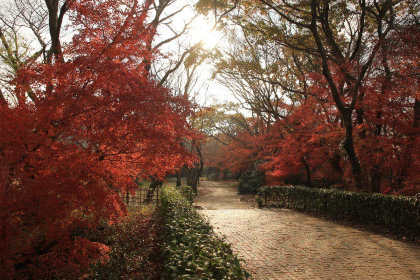

Sakura Castle Park is a picturesque park surrounding the ruins of Sakura Castle which was selected as Japan’s top 100 castles in 2006. There, you can still see traces of the castle, mainly the earthwork and moat. The park reveals a different look every season, with ginkgo and maple leaves forming a yellow and red canvas in autumn.
Take the time to savor some tea and the calming view at the park’s tea house.
- Peak period: Ginkgo: early to mid-November, Japanese maple: mid-November to mid-December
- Venue: Sakura Castle Park (Jonaicho, Sakura City)
- Cost: Free
- Access:
By train: 20-minute walk from Keisei Main Line Sakura Station, or 25-minute walk from JR Sobu Line/JR Narita Line Sakura Station
By car: 20 minutes from Sakura IC - Sakura City official website

- For enquiries: Sakura City Enticing Sakura Promotion Department TEL: 043-484-6146
Kanpukuji Temple (Katori City)
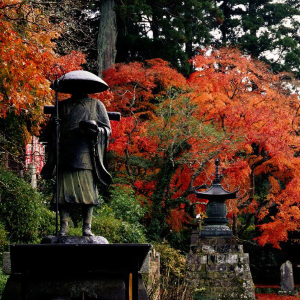
Kanpukuji Temple is considered one of Japan’s three great evil-warding daishi temples, together with the temples in Kawasaki and Nishiarai. Here, you can find the grave of Ino Tadataka, who completed the first map of Japan using his walking steps as measurement.
Kanpukuji Temple is also known for its seasonal sights of cherry blossom pinks in spring, refreshing greens in summer, and flaming reds in autumn.
- Peak period: Late November to early December
- Venue: Kanpukuji Temple (1752 Makino, Katori City)
- Access: 【By train】 25-minute walk from JR Narita Line Sawara Station
- For enquiries: Kanpukuji Temple TEL: 0478-52-2804
Komatsuji Temple (Minamiboso City)
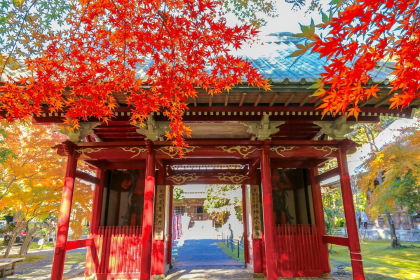
Komatsuji Temple is home to a temple bell which is designated by the prefecture as a tangible cultural property. As the southernmost fall color spot in the Kanto region, this is also where you can still see fall colors after every other spot in the Kanto region has turned bare.
Blanketed with the reds of the maple leaves and yellows of the ginkgo leaves, Komatsuji Temple is hailed as the “Momiji Temple” of Minamiboso. The temple grounds will also be illuminated at night, from mid-November to early-December, revealing yet another side of Komatsuji Temple.
Amble through the tunnel of maple trees and emerge from the vermillion Niomon Gate into serenity.
- Peak period: mid-November to mid-December
- Venue: Komatsuji (1057 Onuki, Chikura-cho, Minamiboso City)
- Cost: Free
- Access: 【By car】 30 minutes from Tomiura IC on the Futtsu Tateyama Road
- Komatsuji Temple website

- For enquiries: Komatsuji Temple TEL: 0470-44-2502
Lake Kameyama Autumn Festival (Kimitsu City)
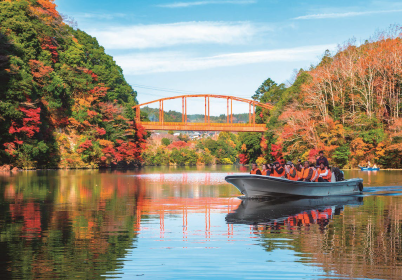
Lake Kameyama is a manmade lake resulting from the erection of Kameyama Dam in 1980. Set deep in the Boso Peninsula, the dam is surrounded by flora and fauna and is the number one lakeside tourism spot in Chiba Prefecture.
Hike or cycle the perimeter of the lake or take a cruise on the lake to enjoy different views of the red foliage around the lake and in the ravine.
- When: 18 November (Saturday) to 3 December (Sunday)
- Access: 【By train】 10-minute walk from JR Kururi Line Kazusa-Kameyama Station
- Venue: Lake Kameyama (Kameyama Yasuragikan, 8 Kawamata Kyukawamata, Kimitsu)
- For enquiries: Kimitsu City Tourism Association Kameyama Branch Office TEL: 0439-39-2535 (10: 00~16: 00)
II. Exhibitions, Concerts, etc
1) Theo Jansen Exhibition @ the Chiba Prefectural Museum of Art (Chiba City)
A cultural exchange project with the Netherlands
|
Animaris Plaudens Vera, ©Theo Jansen |
With this year marking the 150th anniversary of the establishment of Chiba Prefecture and building on our historical relations with the Netherlands, the Chiba Prefectural Museum of Art will hold an exhibition by world-renowned Dutch artist Theo Jansen.
Theo Jansen (born 1948) is an artist born in The Hague in the Netherlands. He majored in physics at Delft University of Technology before turning his attention to art. In 1990, he began manipulating plastic tubes into “cells” to create the wind powered strandbeests. The evolution of the strandbeests can be traced through their genealogy. Their joints bending smoothly as they amble on the sand reveal the intrinsic beauty of this lifeform as it continues to evolve.
At this exhibition organized by Chiba Prefecture and the Netherlands as part of an exchange project, you will be able to observe several of the strandbeests, study the sketches that lead to their production, and see the components of a strandbeest. It is a good opportunity for us to think about how we can live symbiotically with nature.
- When: 27 October 2023 (Friday) to 21 January 2024 (Sunday)
- Entrance fee: General ¥1,000; High school and university students ¥500
※Free for seniors over 65 years old, junior high school students or younger and persons with disabilities carry certification plus one caregiver - Opening hours: 9:00 to 16:30 (last entrance at 16:00)
- Closed on: Mondays (If a public holiday falls on Monday, the museum will be closed on Tuesday instead.)
Year-end and New Year holiday (28 December 2023, Thursday to 4 January 2024, Thursday) - Venue: Chiba Prefectural Museum of Art (1-10-1 Chuoko, Chuo-ku, Chiba City)
- Access: 【By train】 10-minute walk from JR Keiyo Line or Chiba Urban Monorail Chiba Minato Station
- For enquiries: Chiba Prefectural Museum of Art
 TEL: 043-242-8311
TEL: 043-242-8311
I. Festivals and Events II.Exhibitions, Concerts, etc
